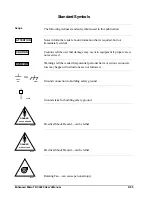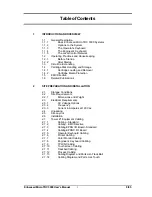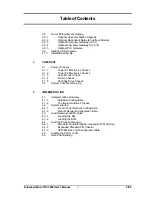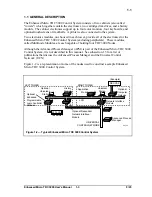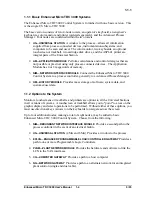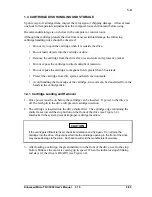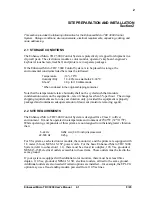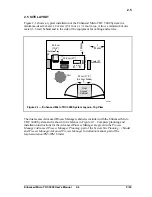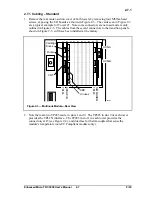
Enhanced Micro TDC 3000 User’s Manual
1-7
9/95
1.2
1.2 OPERATING PRACTICES AND HOUSEKEEPING
Listed here are some do's and don'ts pertaining to operating practices and general housekeeping
that should be followed during startup and normal everyday operations.
1.2.1 Before Startup
1. Thoroughly clean all operating areas, subfloor areas, cable raceways, heating and air-
conditioning ducts, and plenums.
2. Make sure that all control-room windows are sealed.
3. Place impregnated mats at each entrance to a control area to prevent dirt and dust from
being tracked in.
4. Provide a coat rack and/or closet outside the operating area for removal of any outer
clothing made of nylon or other synthetic fabrics, except where flame-retardant
uniforms are mandatory at all times.
5. Make sure that the furniture and carpets are not made of materials that can combine with
clothing to create static electricity.
6. Prepare a regular cleaning schedule for specific area requirements and for cleaning of
consoles, cabinets, and peripheral devices where necessary. (Caution: Do not attempt
to clean the printed-wiring boards themselves.)
7. Establish a "no-smoking" rule in the operating area. Smoke and other fine dust
particles can damage cartridge disks and drives.
8. When swapping or handling printed-circuit cards, use a static-control device, such as a
wrist strap; see Circuit Card Handling, subsection 1.3 of this manual.
1.2.2 After Startup
1. Continue your "no-smoking" rule in the operating area. Smoke and fine dust particles
can damage cartridge disks and drives.
2. Maintain humidity levels (ideally) between 40 and 60% (lower humidity may cause
static-discharge problems).
3. Control humidity fluctuations to a rate-of-change less than 6% per hour.
4. Do not defeat temperature and humidity controls by opening doors and windows (for
example, to enhance operator comfort).
5. Keep traffic in the control-room operating areas to a minimum. Restrict access to
authorized personnel, whose duties require control room entry.
6. Review procedures for extinguishing electrical fires and establish fire-fighting
procedures. Refer to a qualified fire-fighting systems contractor for assistance.
Summary of Contents for Enhanced Micro TDC 3000
Page 1: ...L 8 Node Enhanced Micro TDC 3000 User s Manual MT11 520 ...
Page 2: ......
Page 10: ...Enhanced Micro TDC 3000 User s Manual iv 9 95 ...
Page 56: ...Enhanced Micro TDC 3000 User s Manual 3 8 9 95 ...
Page 82: ...Enhanced Micro TDC 3000 User s Manual 4 26 9 95 ...
Page 128: ...Enhanced Micro TDC 3000 User s Manual 5 46 9 95 ...
Page 144: ...Enhanced Micro TDC 3000 User s Manual 6 16 9 95 ...
Page 156: ...Enhanced Micro TDC 3000 User s Manual B 4 9 95 ...
Page 168: ...Enhanced Micro TDC 3000 User s Manual Index 12 7 95 ...
Page 171: ......




